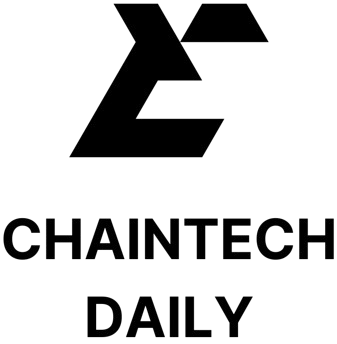Disclosure: The views and opinions expressed here belong solely to the author and do not represent the views and opinions of crypto.news’ editorial.
Stablecoins have quickly grown into a prominent market, but that doesn’t mean their staying power has stopped being questioned. The Bank for International Settlements recently brought this matter up once again, with its new report claiming stablecoins fail at three crucial criteria that any good money must satisfy: singleness, elasticity, and integrity. But personally, I can’t quite agree with that assessment.
Summary
- BIS critique vs. reality: The Bank for International Settlements claims stablecoins fail at singleness, elasticity, and integrity — but the argument overlooks how these apply in practice.
- Singleness isn’t absolute: Like bank deposits during crises (e.g., SVB), stablecoins can temporarily deviate, but USDC/USDT still redeem 1:1 and function when banks are closed.
- Elasticity is different, not absent: Banks rely on settlement delays to create liquidity, while stablecoins settle instantly. Mechanisms like flash loans show that elasticity can be coded in.
- Integrity cuts both ways: Banks stop less than 1% of illicit flows, while blockchain transparency enables better tracing and even recovery of stolen funds.
- Work in progress, not failure: Stablecoins don’t need to mimic banks — they just need to preserve value, move efficiently, and maintain trust, often doing so in ways banks can’t.
Admittedly, stablecoins aren’t perfect. Despite achieving considerable growth, the market is still small compared to traditional banking, and predictions about its future advancement have already been dialed back lately. JPMorgan, for example, now sees the stablecoin market reaching $500 billion by 2028 — down by half compared to the trillion-dollar projections that some were betting on just last year.
Moreover, stablecoins have yet to see widespread adoption beyond crypto-native platforms. In other words, they still have a long way to go before they can become mainstream financial tools or rival banks in scale.
But that doesn’t mean they fail the three tests BIS used to dismiss them. In fact, I would argue that they might pass them better than banks do. It’s all about how we look at it.
Singleness: A practical perspective
The BIS report argues that stablecoins lack “singleness” — the idea that every unit of money should be worth the same as any other unit. On paper, this sounds reasonable. In practice, however, singleness is never perfect. Even bank deposits can lose value or become illiquid in stressful times.
Take USDC (USDC) and Tether (USDT), the two biggest and most well-known stablecoins. They’re no less “single” than traditional bank deposits. Holders can redeem them for U.S. dollars at face value. Sometimes the market price deviates slightly, but the same can be said for bank deposits. Just look back at the Silicon Valley Bank collapse — some depositors sold their claims at a discount so they could get out faster. That’s not so different from USDC temporarily trading below its peg during the same crisis because people were skittish about where the reserves were held.
Stablecoins, however, offer something banks don’t: the ability to absorb immediate demand. On weekends or holidays, when the banking system is closed, you can still trade USDT or USDC. Tokenized bank deposits — if they ever gain traction — would likely behave the same way. So if we’re fair, stablecoins aren’t failing singleness; they’re just showing how the concept itself faces obstacles in real-world conditions.
Elasticity: Faster doesn’t mean weaker
Next up: elasticity — the idea that a money system should expand or contract to meet real economy demands. The BIS claims stablecoins lack elasticity because they require cash in advance. You can’t spend what hasn’t been minted yet, and additional issuance requires upfront payment by holders.
But here’s the catch: stablecoin transactions settle very differently from traditional banking. With banks, when you transfer funds, it often takes at least one full business day for the money to settle. During that time, banks can effectively “print” temporary money because the same funds might appear in two places at once: the sender’s account still shows the balance while the recipient’s bank processes the incoming payment. This gap is one of the ways banks maintain liquidity and keep payments flowing, even when the actual cash hasn’t moved yet.
Stablecoin transactions work differently because settlement happens instantly on the blockchain. The moment a transaction is confirmed, the funds are transferred — there’s no “money in transit” like there is with banks. That said, it is possible to build crypto mechanisms that mimic bank-like liquidity.
One way of doing that is through flash loans, where essentially “unbacked” stablecoins are borrowed and repaid within the same blockchain transaction. This means liquidity is provided instantly, without the risk of the system being left with bad debt.
It’s a different model, but it shows stablecoins don’t have to copy banks exactly — they can build elasticity right into the code, settling transactions fast while still expanding when needed for the functioning of the system.
Integrity: Is the banking system really safer?
Finally, the BIS report raises the issue of integrity: how well a money system prevents illicit activity and ensures compliance. Banks have decades of anti-money laundering measures in place. Crypto, by design, is more open — and that worries regulators.
But traditional banking AML is hardly foolproof. UN estimates suggest that less than 1% of financial crime is actually stopped by today’s systems. In crypto, hacks do happen — and they’re incredibly frustrating — but the transparency of blockchains makes tracing stolen funds possible in ways banks can’t match.
As a result, a significant portion of stolen crypto funds can eventually be recovered. Maybe not all of it, but it’s still far better than the tiny fraction of illicit funds intercepted in the traditional banking system.
Stablecoins are a work in progress — but that doesn’t mean banks win
In short, dismissing stablecoins because they operate differently from banking completely misses the point. Stablecoins don’t need to be banks to succeed — they just need to do what money is supposed to do: hold its value, move when needed, and maintain trust.
On all three fronts — singleness, elasticity, and integrity — the comparison is far more nuanced than the BIS report suggests. If anything, the test should push banks to evolve as well. After all, the future of money isn’t about defending legacy models; it’s about building systems that actually work for the people using them.


